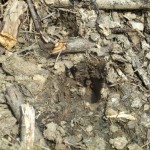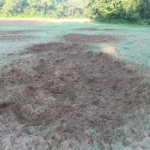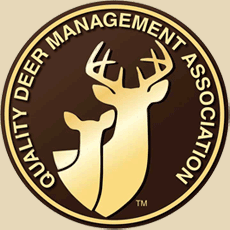We begin this month with the first of a month long series on tactics, techniques and methods of hunting what is quickly becoming the second most popular game animal is the USA. The feral hog is a formidable foe, and by many accounts one of the most challenging of game animals. For clarification purposes, many state departments of Natural resources does not consider the feral hog a “game animal” however, for our conversations and the discussions we have on how to manage, hunt and process feral hogs, they are considered game.
To begin we will start with understanding the sign a hog leaves behind and how to interpret that sign. I remember well, a stroll I was taking on my property in Kershaw County, SC about twenty-five years ago. The pine forest appeared to have been bombed, or plowed by some wayward tractor. The soil was literally turned over in the woods. Mounds were everywhere; deep furrows followed a meandering path through the forest. The destruction was about thirty yards wide and over one hundred yards long. It took some time to decipher the cause of the destruction. Once understood, I knew I had to do something. Hogs can use their noses or snouts to ‘root’ or to dig into the ground in search of grubs, worms, tubers and virtually anything that seems palatable to them. They do this to cure their seemingly endless appetite. Hogs do and will eat anything they can swallow. While they are omnivores, the bulk of their diet consists of invertebrates, and tubers. Hogs will however, eat snakes, frogs, small mammals, carrion and even on some occasions cannibalize.
How does this translate to the farmer, landowner or manager? We as sportsmen and women are in a quandary. We love hunting feral hogs, but their destructive nature makes them a real force to reckon with.
Hogs will typically travel in family groups and extended family groups known as a ‘Sounder’. These groups can consist of a few animals to several dozen and in rare occasions hundreds. Female hogs are sexually mature at four months of age, and are capable of producing up to three litters a year – but two is more common. Litter sizes range from four to ten with six being the average. So when using the simple law of calculated production, one female hog will have twelve young a year, each of the females in those litters will be sexually mature in four months and can have two litters a year. It doesn’t take a lot of math to see that one pair of hogs on your property can very quickly turn into a pandemic.
Landowners who are managing their property for Quality Whitetails will need a very aggressive approach to managing and dealing with the bulging feral hog population. Estimates by the USDA, DNR and other agencies show that at the rate the hogs are multiplying, a full 70% of the population will need to be removed annually just to maintain the current status. So if you have 100 hogs on your property, you will need to remove 70 hogs this year, next year and the next etc. just to maintain your current situation. However as hunters, we also can benefit from the challenge of hunting feral hogs, the fun of hunting them and the excellent table fare they provide.
Along with rooting activity, hogs will leave other sign when traveling, tracks, scat, wallows, and rubs. Hogs will wallow in the summer months to cool down, like many animals they cannot sweat; therefore they have to wallow to cool their body down when it is hot. In these mud holes they will also cake their hide with mud and rub against trees marking and to scratch and help ward off insects. These wallows and rub trees can help hunters identify the size of the animals making these sign. A mud rub on a tree that is over thirty inches high is big pig by any stretch. Most will be in the twenty to twenty four inch height. Looking for tall rubs and long, deep wallows will help identify where the larger hogs are hiding.
 Hog tracks are different from deer. While at first they may seem similar, the real only similarity is they are cloven hoof animals. A hog print is much more rounded and shorter than a deer. Deer are narrower at the point and considerably longer than that of a hog.
Hog tracks are different from deer. While at first they may seem similar, the real only similarity is they are cloven hoof animals. A hog print is much more rounded and shorter than a deer. Deer are narrower at the point and considerably longer than that of a hog.
Once you have identified that you have hogs on your property, its time to get a plan to manage them. Next installment we will begin the steps of controlling, hunting and techniques to manage your feral hog population.






